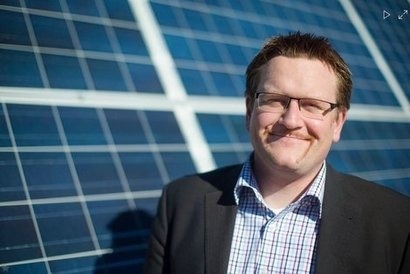
The study also shows that a 100 percent renewable system is the cheapest electricity production option and can be achieved with minimal deployment of energy storage systems. The cost of electricity in a 100 percent RE system ranges between 47 to 62 euros per megawatt hour, depending on the applied assumptions. In comparison, other options, including new nuclear and carbon capture and storage (CCS), are 75-150 percent higher in cost than the 100 percent RE.
“South America has a unique renewable energy resource base since one of the best wind sites globally is in Patagonia, the best solar energy sites are in the Atacama Desert, hydro power is already used in large amounts and the sustainable biomass potential is significant” said Professor Christian Breyer. “For these reasons, South America is one of the most favourable regions globally to shift to a 100 percent RE system,”
The total installed capacity of renewable electricity in the fully renewable system is composed of 415 gigawatts of solar photovoltaics, 144 gigawatts of hydro dams, 39 gigawatts of hydro run-of-river, 17 gigawatts of biogas, 4 gigawatts of biomass and 69 gigawatts of wind power. The abundance of solar and wind power in South America as well as the high capacity of hydro dams means that the region does not need many energy storage systems. Hydro dams can be used as a virtual battery for solar and wind electricity storage, balancing generation and demand in times of lacking solar of wind electricity during the course of the year. In other parts of the world, this would require power-to-gas technology, in which electricity is converted into gases, such as hydrogen and synthetic natural gas, and converting them again back to power.
The study also showed that if the current industrial natural gas demand in South America is replaced by power-to-gas technology, the need for energy storages will plummet. This is called system integration in which power-to-gas, but also other technologies, increase the flexibility of the electricity system without the need for large energy storages. This flexibility lowers the cost of electricity. This integration is estimated to save up to 13 billion euros.
The research is one of several similar studies the researchers have conducted on other regions of the world, with result already been published for North America, Northeast Asia, Southeast Asia, Central Asia and Russia, the Middle East and Northern Africa, Sub-Saharan Africa and Europe. These studies have allowed the researchers to highlight regional issues. South America has a competitive advantage over other parts of the world to develop a 100 percent RE system.
The study was carried out as part of the Neo-Carbon Energy research, which is funded by the Finnish Funding Agency for Innovation, Tekes, and is carried out in cooperation with Lappeenranta University of Technology (LUT), VTT Technical Research Centre of Finland Ltd. and the University of Turku, Finland Futures Research Centre.
For additional information:

